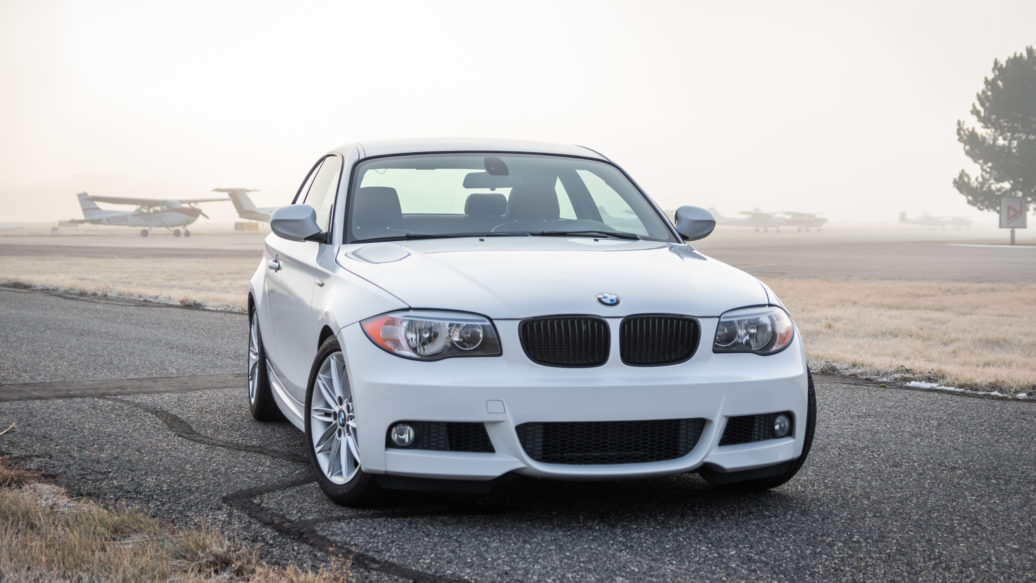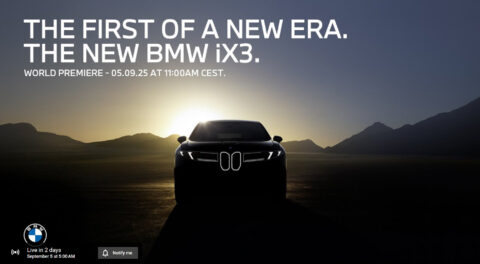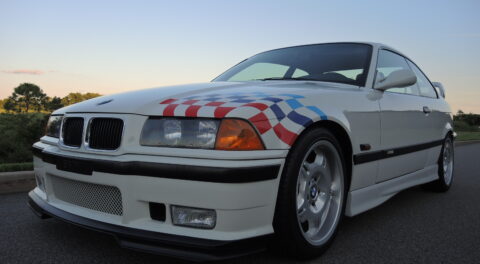BMW ownership is contagious (perhaps that’s not the best analogy in the current world, but it’s true). I’ve infected many friends and family with the BMW bug over the years, and found that one BMW usually leads to another. For one particular friend, it all started with a Z3 M roadster finished in Alpine White over an Imola Red interior. That car was the genesis of a budding collection, loosely consisting of a white-over-red color scheme.
And in searching for those colors, he found a true unicorn: a 2013 BMW 128i M Sport finished in Alpine White over a Coral Red leather interior.
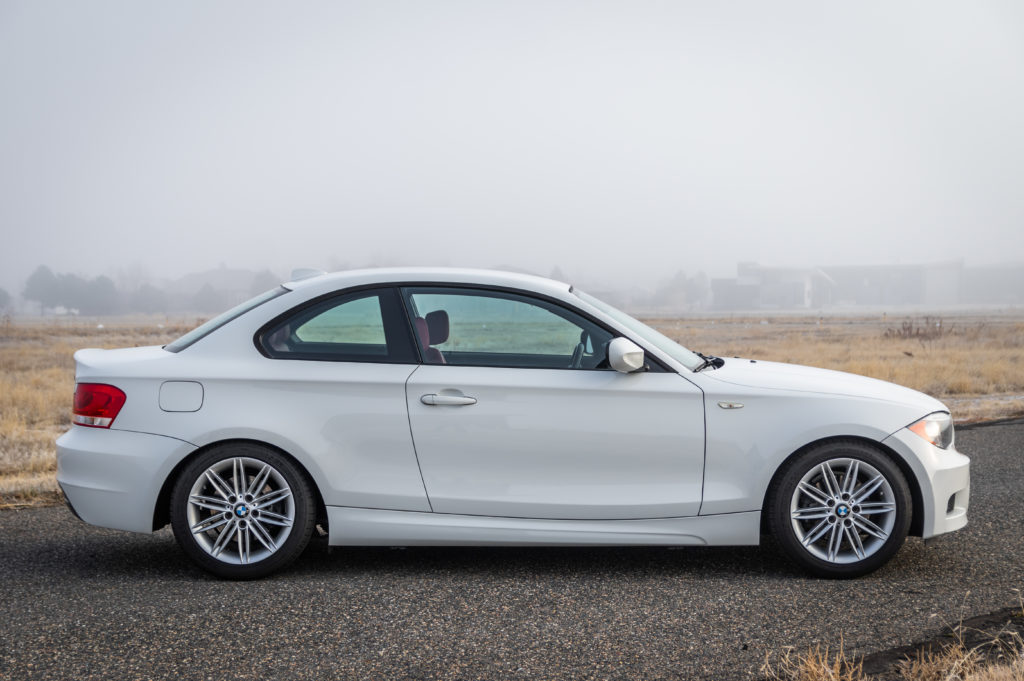
A unicorn 2013 128i M Sport.
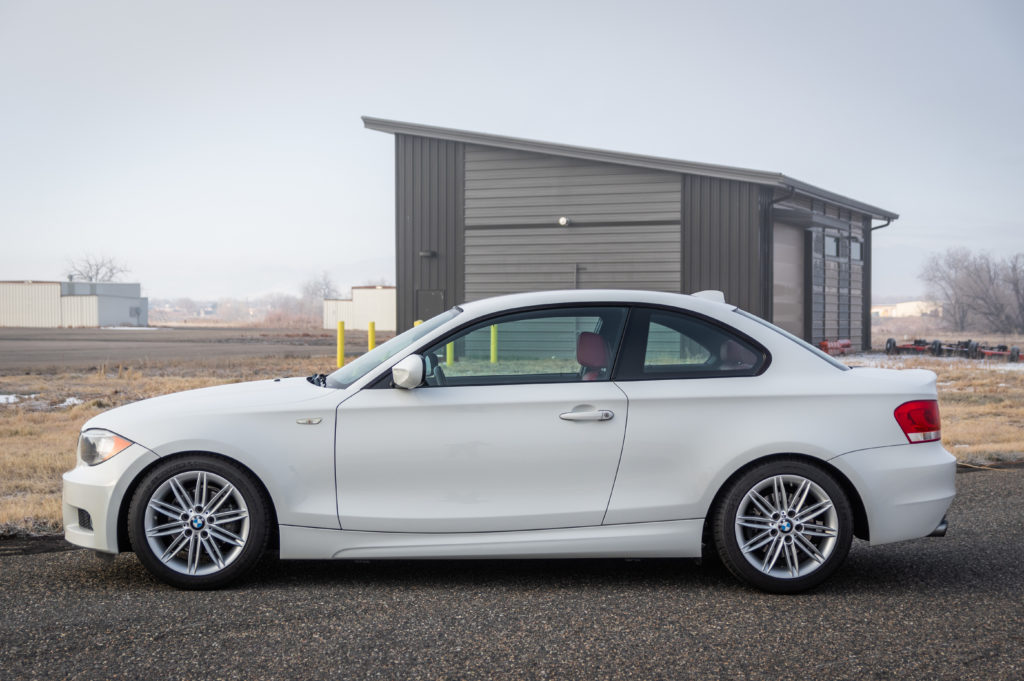
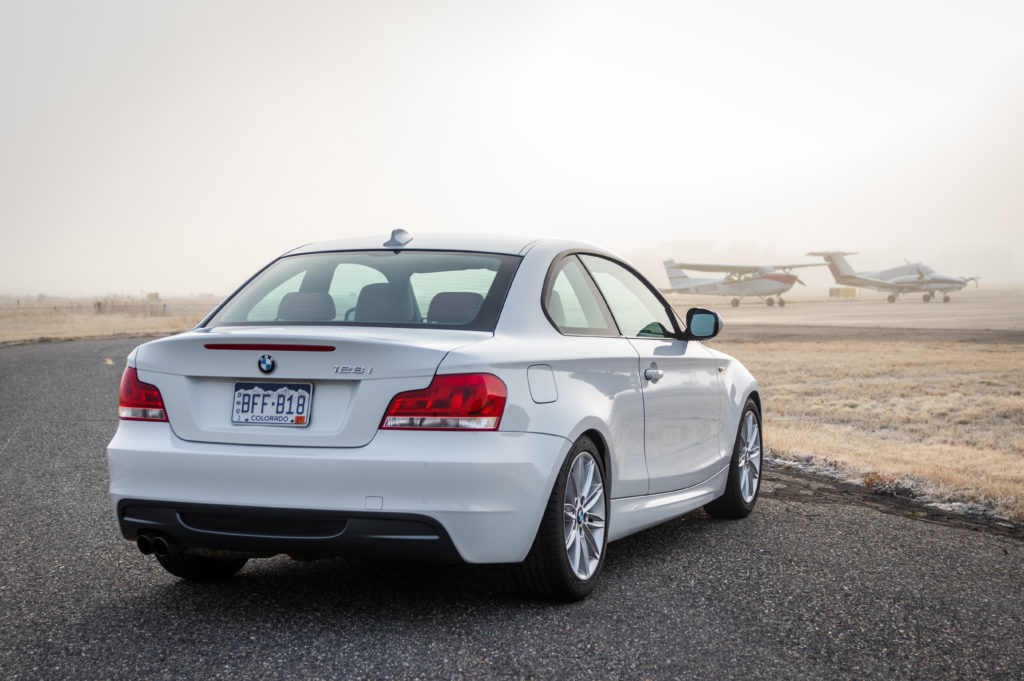
Now, Alpine White over Coral Red isn’t exactly a rare color combination for the E82 1 Series; what made it unique was its option list. It was ordered to an enthusiast’s specifications with the M Sport package, sunroof delete (slick-top), iDrive delete, and manual seats (with power-adjustable side bolsters thanks to the M Sport package). Then, unfathomably, the six-speed automatic transmission was chosen in lieu of the six-speed manual gearbox. The production date was June 25, 2013, near the very end of first-generation 1 Series production.
When my friend sent me the link to the ad, I was intrigued. After reaching out to the owner, it was clear that he had been meticulous. When you a buy a used BMW, prior ownership is the most important factor, and this owner was extremely detailed in his presentation and knowledge of the car. His price was fair, and I felt confident after talking to him, so my friend bought it sight-unseen for full asking price. A week or so later, the 128i showed up—and it was exactly as described.
Available since 2004 as a hatchback (E87) in Europe, when the 1 Series coupe (E82) and convertible (E88) were unveiled in 2007 for the 2008 model year, they were also offered in the U.S. market. It was a roll of the dice on BMW’s part, since they had not released a compact in the U.S. since the E36 318ti.
The 1 Series was marketed as the spiritual successor to the 2002: a small and sporting car that prioritized driving experience over luxury. Indeed, at my first BMW driving school in 2008, a newly delivered 135i edged out my M coupe as the favorite car of the day (I may have even voted for it over the clown shoe). The 300-horsepower turbocharged 135i often overshadows the 128i, but the latter’s naturally aspirated 230-horsepower N52 engine is no slouch, delivering a zero-to-60 time of 5.7 seconds—that’s E36 M3 territory.
The 128i is also remarkably more reliable, having none of the 135i’s turbocharged engine proclivities. BMW CCA technical editor Mike Miller once commented, when they were new, that if he were to buy a new BMW, it would be a 128i with the fewest number of options possible. A decade or so later, the 1 Series is in the awkward teenage phase: not quite new, but not quite a classic (the instant-classic 1 Series M Coupe notwithstanding).
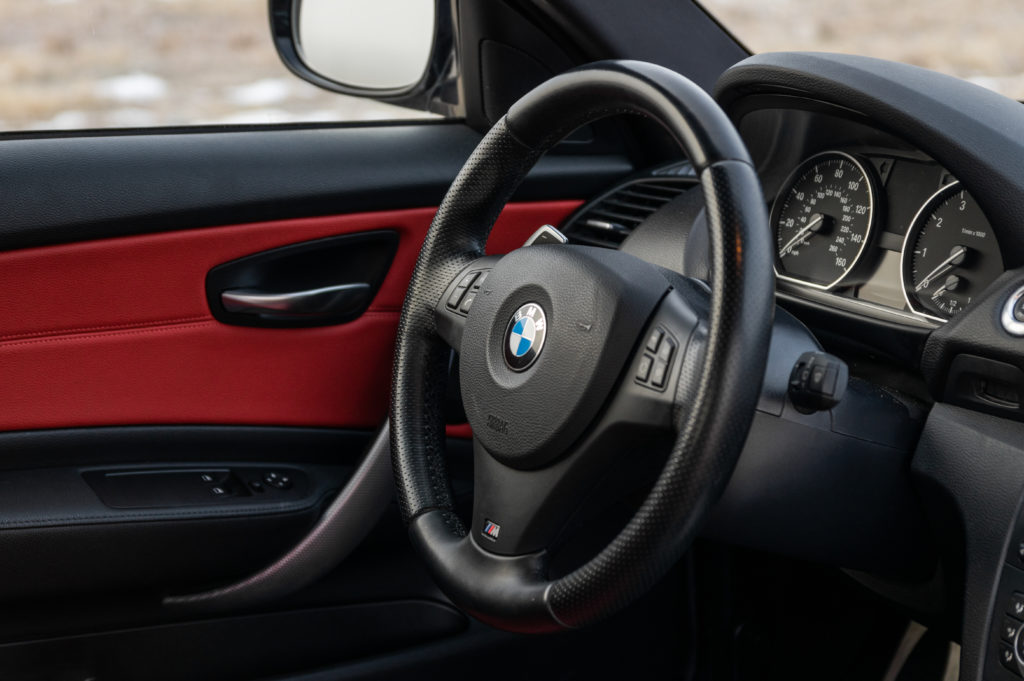
Options include a Coral Red interior, the M Sport package, and Glacier aluminum trim.
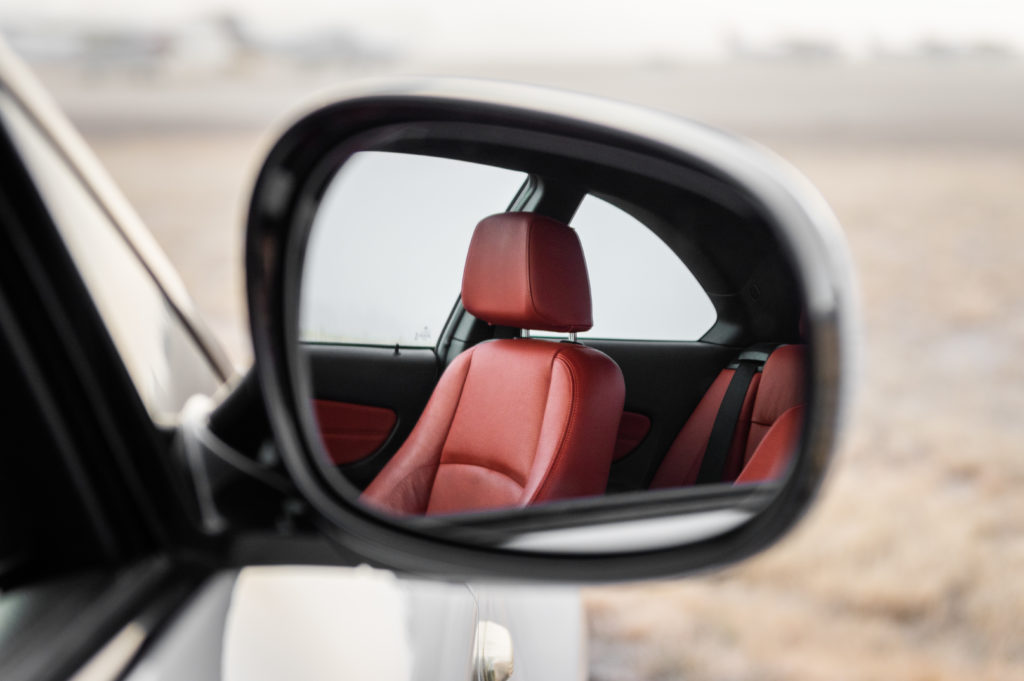
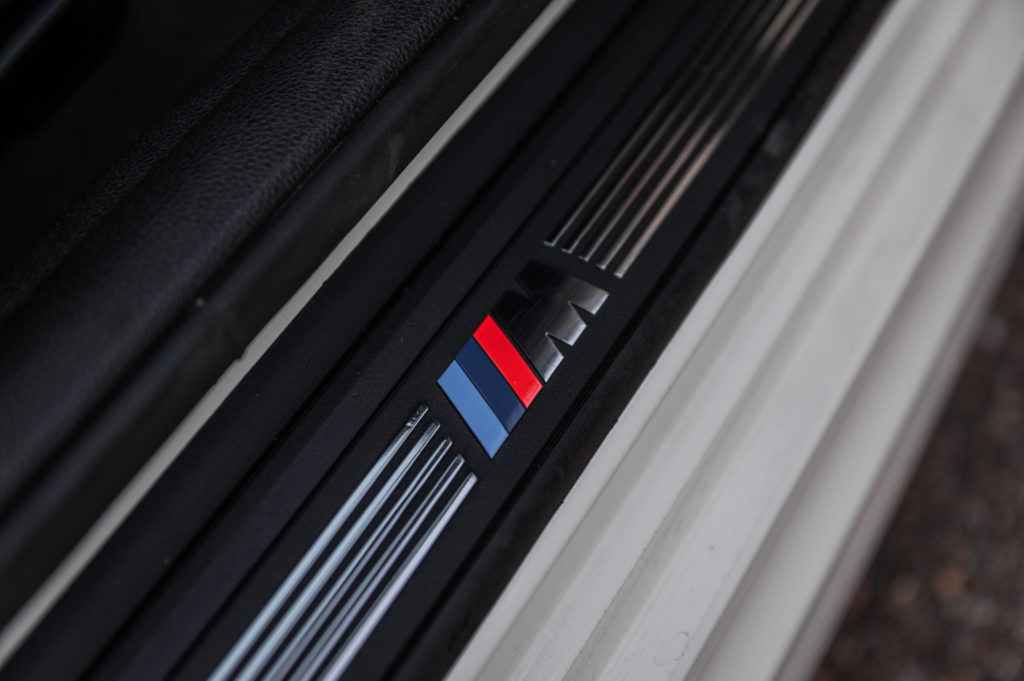
In the flesh, the 1 Series reminds me more of an E30 3 Series than a 2002; it has roughly the same dimensions, although it’s taller and significantly heavier. But it also has substantially more power to make up for that weight. I wouldn’t call its styling elegant, but the same could be said for my M coupe, which time has been very kind to. From the side profile, the 128i’s stubby proportions work well, thanks to the long hood and up-turned trunk lid. At certain angles, it does bulges rather awkwardly, but the same could also be said for the M coupe—and you know how I feel about those!
The M Sport package (formerly the sport package on earlier 128i models) adds M Sport suspension, M aerodynamics, high-gloss Shadowline trim, Glacier Silver aluminum interior trim, sport seats, and an M Sport steering wheel with paddle-shifters when equipped with the ZF six-speed torque-convertor automatic transmission. The Style 207 wheels on this example aren’t my favorite of the 1 Series options, but they have a smaller diameter: seventeen inches versus eighteen. That offsets the firm ride somewhat.
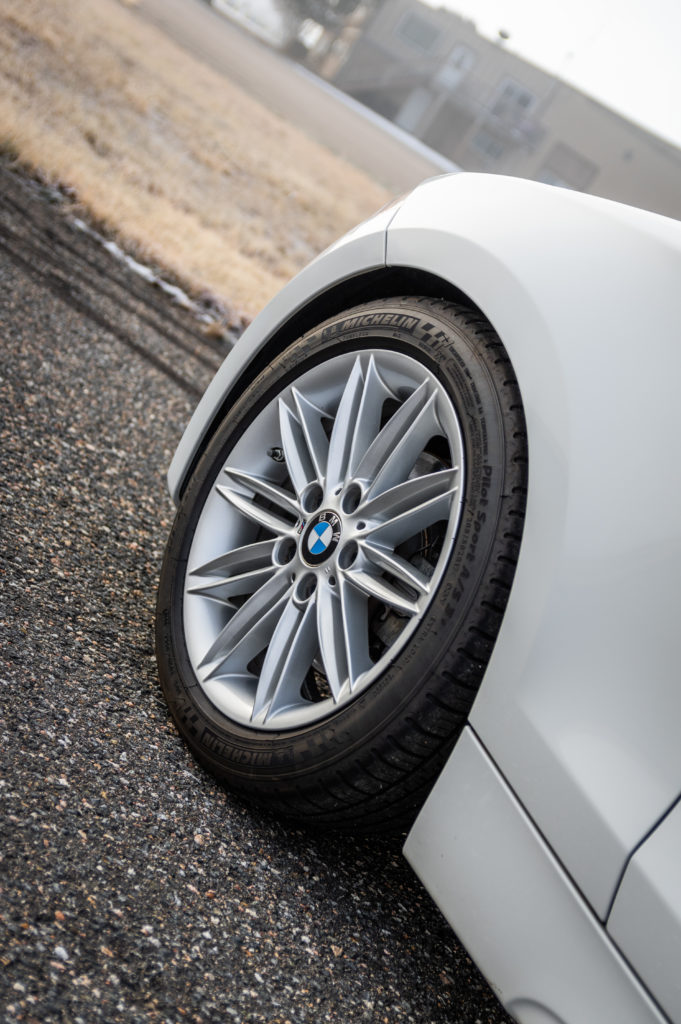
The Style 207 wheels aren’t my favorite, but they do offer a softer ride than the eighteen-inch options.
Open the door, sit down in the firmly bolstered seat, ratchet it into place using a multitude of manual controls (don’t forget those power side bolsters), and the 1 Series fits like a tight glove. It is unmistakably driver-focused—a rarity in the modern world. Outward visibility is also surprisingly good, another rarity these days. The three-note door chime of all modern BMWs (the composer of which was once featured on a CNBC BMW special) reminds me of the Airbus’s altitude-alerting sound as you reach a level-off, although it is more cheerful and less consequential than the tone in the jet.
Push the key fob into the slot (no Comfort Access in this 128i), push the start button, and the N52 engine comes to life. It’s not the greatest-sounding engine, but few modern BMW engines are.
What is remarkable about it is that it’s the last naturally aspirated inline six-cylinder engine BMW has offered to the U.S. market.
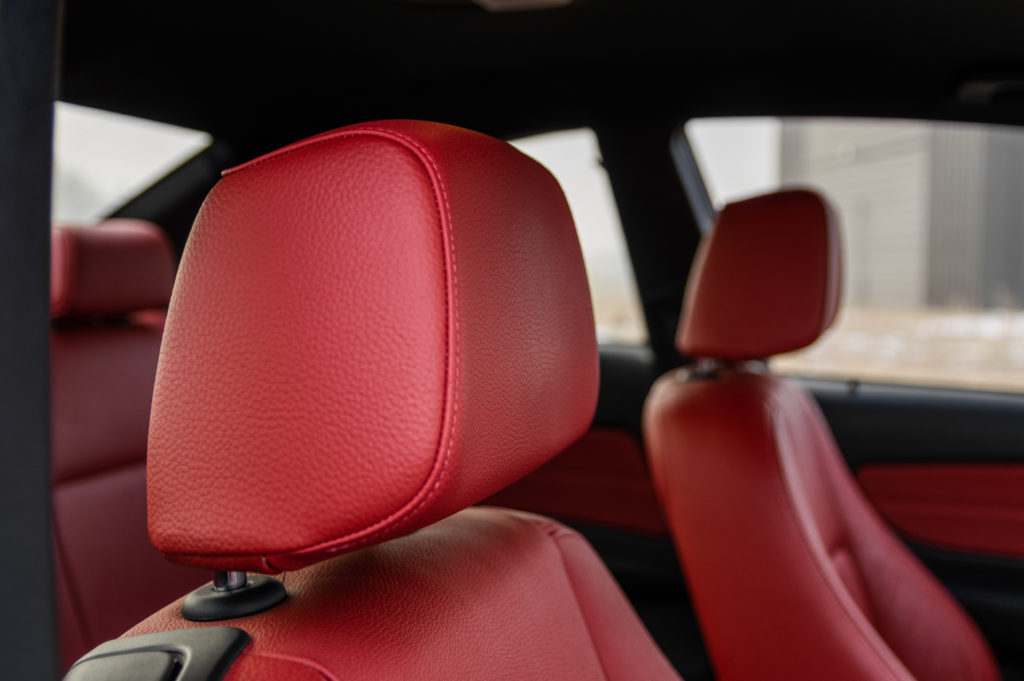
Coral Red manual seats feature power side bolsters.
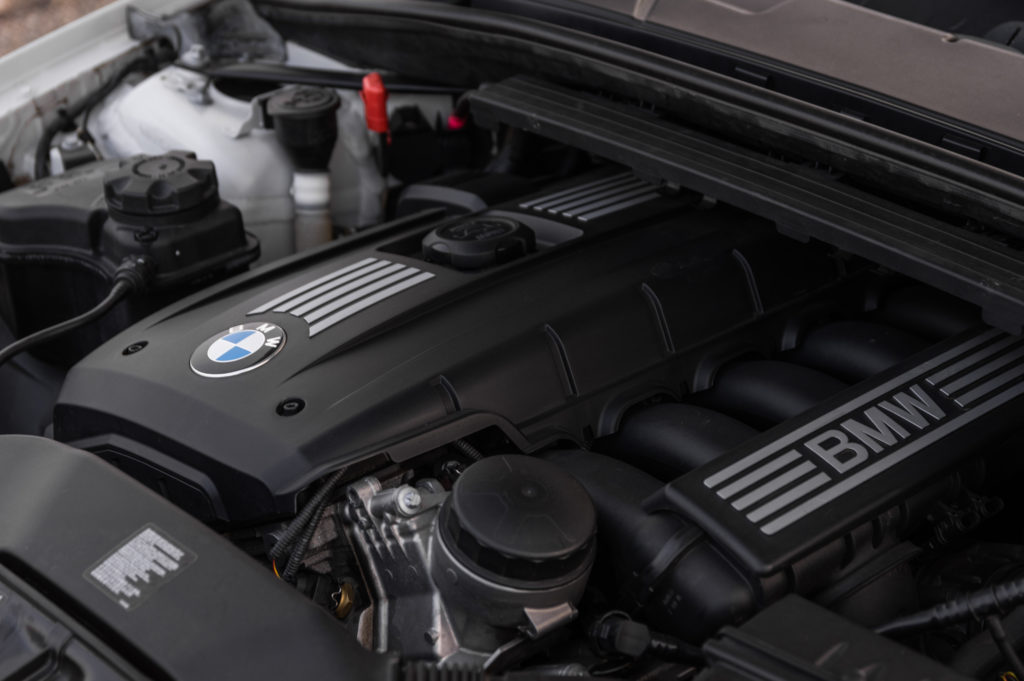
The N52 engine has 70 fewer horsepower than the N54/N55 of the 135i, but it still offers E36 M3 performance in the 128i.
Out on the open road, the engine is absolutely wonderful. Any old-school BMW-head will be instantly familiar with its smooth, linear torque delivery, and a power band that favors the 4,000-rpm-to-redline range.
When it was released, critics complained that the 128i was too expensive; many argued that for less money you could have more options, similar power, and a comparable driving experience in a Volkswagen GTI. Those were good points—but they were wrong. What you get in the 128i is the last of the naturally aspirated rear-wheel-drive experiences that defined BMW six-cylinder cars for generations. The N52 engine feels so much more lively in the 128i than it does in other applications, like the E9X 3 Series. The 128i also retained the delightfully communicative hydraulic steering that fell by the wayside with the non-M E9X 3 Series and all of the later models to follow. A louder exhaust might add some theater—BMW did offer a BMW Performance muffler for the 128i—but the N52 executes its task superbly.
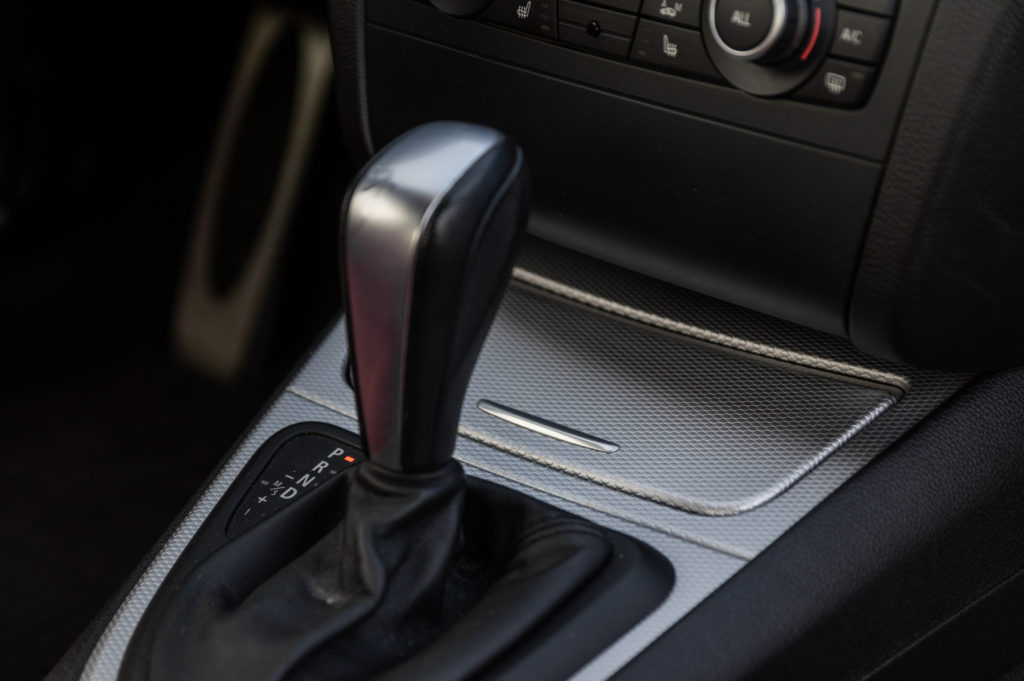
The six-speed ZF automatic gearbox is fantastic, but I still wanted to shift my own gears.
What lets this 128i down is the lack of a third pedal; a manual gearbox would truly create a driving trifecta when paired with its other last-of-its-breed qualities. But perhaps that’s too much to ask. Searching nationwide, I found only a few manual 128i coupes, and none was otherwise desirably optioned from an enthusiast’s point of view. It’s not that the six-speed ZF automatic transmission is bad, either; in fact, it’s a far cry from the automatic gearbox in your grandmother’s E30. The ZF chooses its cogs telepathically, always seemingly being in the right gear. In sport mode, it will downshift early and hold a gear to redline; in manual mode, you can shift with the M Sport paddles or the shift lever. It’s also smoother than the DCT in the 2011–2013 N55 135i, and nearly as quick. In the snarls of traffic and daily commuting duty, the argument sways further toward the automatic, but the rest of the car is so visceral, I just found myself longing to row my own gears.
In the corners, the 128i is exceptionally good; it does exactly what you ask of it with little complaint. In fact, it’s almost too good, requiring little of the driver to extract its cornering prowess. Its small stature, tight fit, and excellent visibility contribute exponentially in cornering, too. Hold the DTC button for a long push to turn everything off, and it’s still hard to get the 128i sideways—it just goes exactly where you point it. The M Sport suspension is firm—very firm, perhaps unnecessarily so—but it does complement the focused nature of the 128i. I was tempted to suggest a set of Ohlin’s road-and-track coil-overs and more aesthetic wheels to my friend, to dramatically improve the look and the overall ride without compromising cornering, but in stock form, it’s probably best to leave well-enough alone.
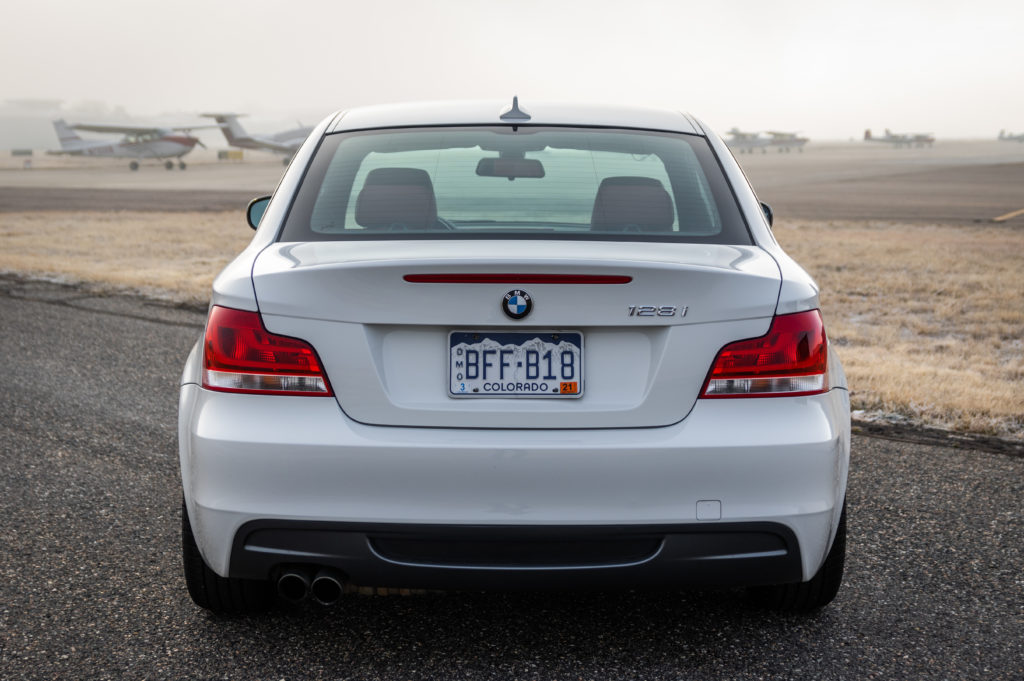
How the future receives the 128i is a mystery.
How the 128i will age is anybody’s guess. At this point, I wouldn’t call it collectable, but it is absolutely special. It marks the end of several definitive traits in the BMW timeline, all in a chassis that couldn’t be more suited to the task. I’m not sure how long it will remain in my friend’s small collection, but it very well could find its way into my garage if it leaves his.—Alex McCulloch
[Photos courtesy Peter Thompson.]

